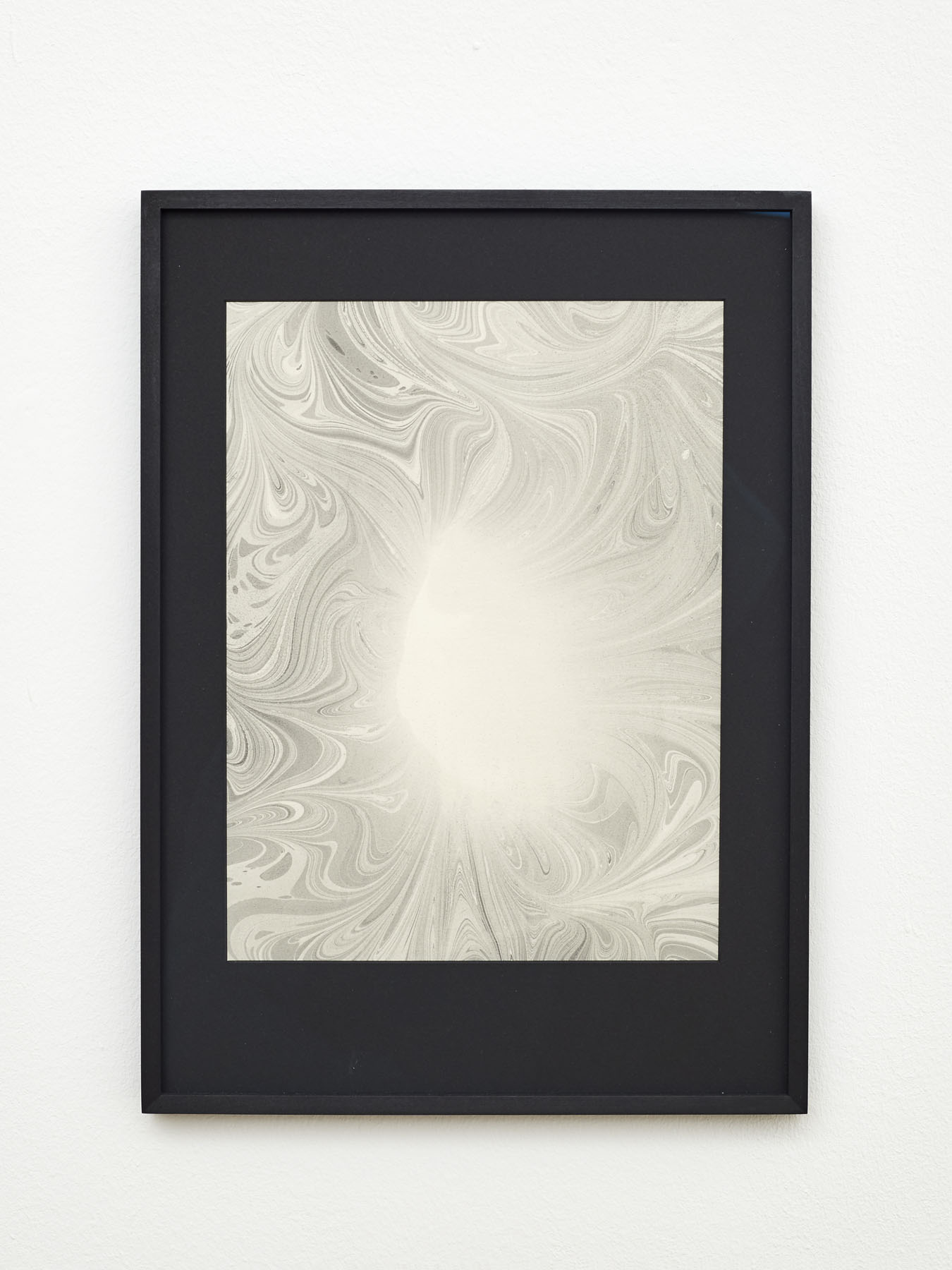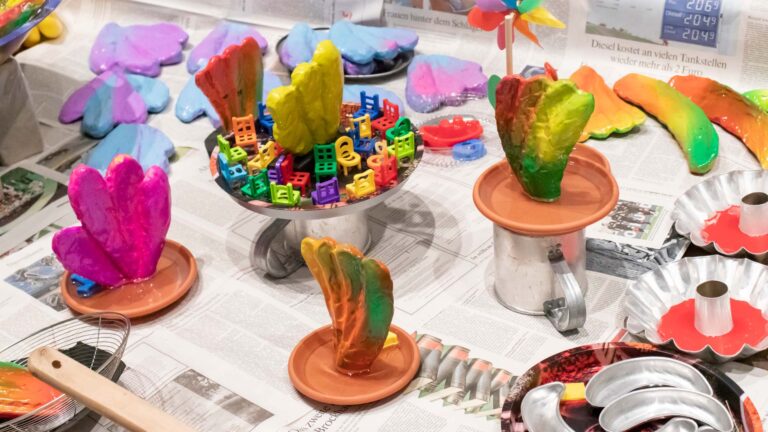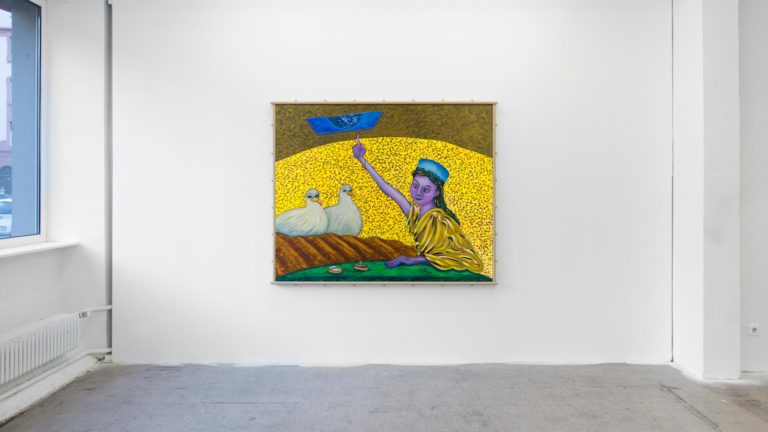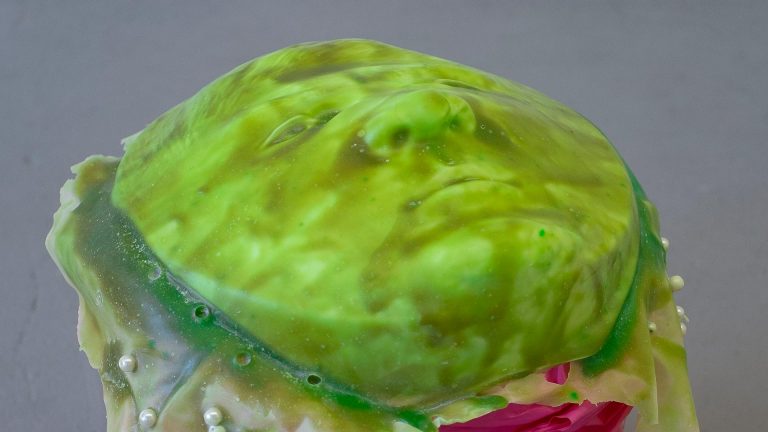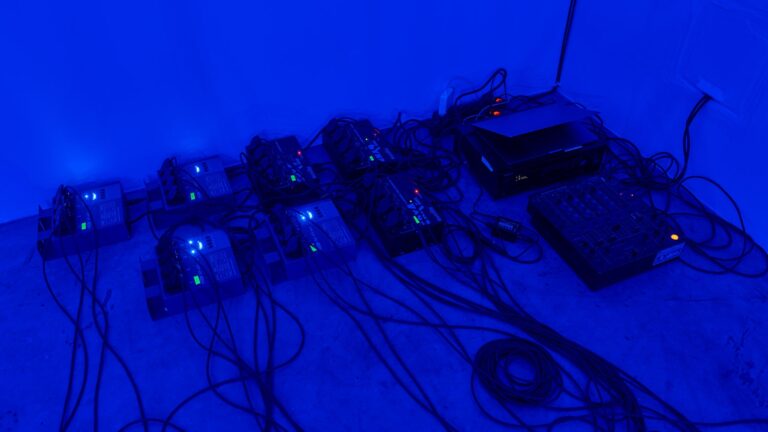Artist: Navid Nuur
Exhibition title: What is lost in time will be found by time
Venue: Jahn und Jahn, Munich, Germany
Date: March 12 – April 25, 2020
Photography: all images copyright and courtesy of the artist and Jahn und Jahn, Munich
Just as time is an expression of perception and change, the artistic cosmos of Navid Nuur remains in constant movement, permanently being formed by drawings, paintings, sculptures, and installations. Nuur himself describes his works as “interimodules”: module in reference to the works’ conceptuality and the interrelationship between different elements, and interim as an indicator of being in-between, a temporary state of transition. Starting from matter as the substance of all things, Nuur investigates almost like an alchemist the nature of art and the world by focusing his attention on materiality and by revealing diverse manifestations, without failing to simultaneously reflect on the complex notion of time.
Following the renovation and brief reopening of the Stedelijk Museum, Amsterdam, in 2010, Nuur had already written the sentence chosen as the title of the current exhibition “What is lost in time will be found by time” with a piece of brick from the museum building on a wall. He also used this statement in a three-part drawing, which can be seen in the exhibition in the form of delicate writing on a white ground and as further prints that appear and disappear through layers of crosshatching. The works oscillate between visible and invisible; the process of searching and discovering implied by the title can be transferred onto the drawings. Moreover, they represent a historical document, referring to each other not only formally but also temporally, and at the same time grappling with the medium itself. On the one hand, there are drawings; on the other, the classical drawing process is overcome and – using chalk and graphite – a trace, a text made in the past, is uncovered.
Recontextualization as well as processes of discovery and rediscovery are characteristic of Nuur’s approach. In his “marbled paintings” he imitates marbling techniques with gesso, a binding agent consisting of plaster and chalk. However, this is not used in the typical sense as the ground for a painting, but rather as the end product. Nuur consistently questions the means of production of painting in his process-based works. Contrary to expectations, the marbled pattern with its fine white lines was not created by a brush or pen, but by a process of applying and scraping. These works as well as the colored “marbled paintings”, in which Nuur worked with fluorescent paint, produce their own unique mood. The arabesques seem to develop their own lives and find themselves in constant motion, similar to the way that “broken ellipse”, filled with blue gas, suggests unity. Nuur’s works encourage a new way of seeing. Phenomena of perception are of central concern to the artist.
Nuur’s artistic approach is intuitive; his works often emerge freely and autonomously. In this way his focus lies on various parameters of art, and he experiments with elements such as color, light, and heat. His ceramic sculptures, which allow him a more open way of dealing with form than his paintings, are understood first and foremost as a collection of minerals whose shapes are influenced by different factors, such as the process of firing. Nuur creates new layers of meaningful content that go beyond the mere function of a vessel. A particular magic is also produced by ancient rocks which the artist positions in the here and now using magnets and iron dust.
Navid Nuur (born 1976 in Tehran, lives and works in The Hague) was given the Royal Award for Painting in Amsterdam in 2011, and in 2013 – together with Adrien Ghenie – he received the Discovery Prize at Art Basel Hong Kong. The Marta Herford is currently showing the solo exhibition “Hocus Focus”. In April, a solo exhibition will follow at the Kunstmuseum Den Haag, The Hague. Works by the artist can be found in significant collections including the Stedelijk Museum, Amsterdam, Musée National d’Art Moderne/The Centre Pompidou, Paris, Neuer Berliner Kunstverein, Berlin, and the Kunsthalle Zurich.
Navid Nuur, What is lost in time will be found by time, 2020, installation view, Jahn und Jahn, Munich
Navid Nuur, What is lost in time will be found by time, 2020, installation view, Jahn und Jahn, Munich
Navid Nuur, What is lost in time will be found by time, 2020, installation view, Jahn und Jahn, Munich
Navid Nuur, What is lost in time will be found by time, 2020, installation view, Jahn und Jahn, Munich
Navid Nuur, What is lost in time will be found by time, 2020, installation view, Jahn und Jahn, Munich
Navid Nuur, What is lost in time will be found by time, 2020, installation view, Jahn und Jahn, Munich
Navid Nuur, Untitled, 2015, linen, Gesso, 200 x 387 x 4 cm
Navid Nuur, What is lost in time will be found by time, 2020, installation view, Jahn und Jahn, Munich
Navid Nuur, Untitled (Soon to be served), 2019, string, sliced appels, time, your breath (installation view)
Navid Nuur, Archaikum/Archean, 2020, heat, time, minerals, patience, luck, Maße variabel | variable dimensions
Navid Nuur, Archaikum/Archean, 2020, heat, time, minerals, patience, luck, Maße variabel | variable dimensions
Navid Nuur, Untitled, 172–171 (from the Eyecodex of the Monochrome), 1980–2020, metal reflecting sheet, emulsion (purple), grout marker, aluminum, light, 210 x 180 x 2,5 cm
Navid Nuur, Untitled (The Passage), 2016–2020, laminated glass, mirror, 195 x 115 cm
Navid Nuur, Untitled (what is lost in time will be found by time), 2017, chalk and graphite on paper, 88 x 65,5 cm jeweils each
Navid Nuur, When Meaning gets Marbled, 2015–2020, graphite ink, 42 x 30 cm















